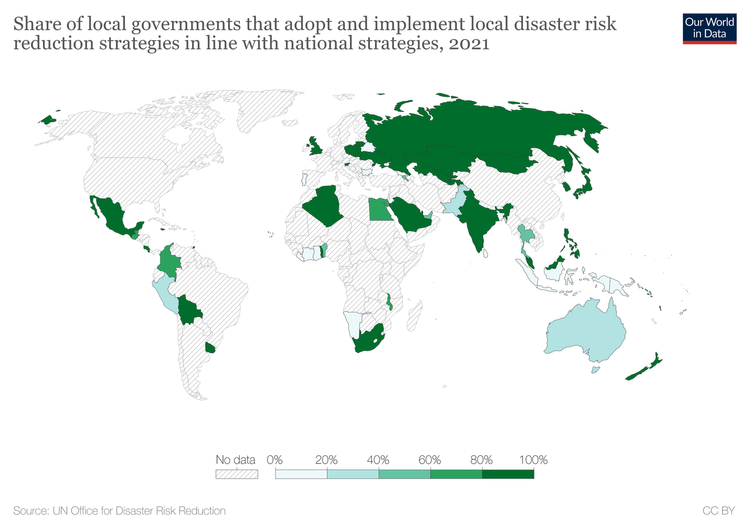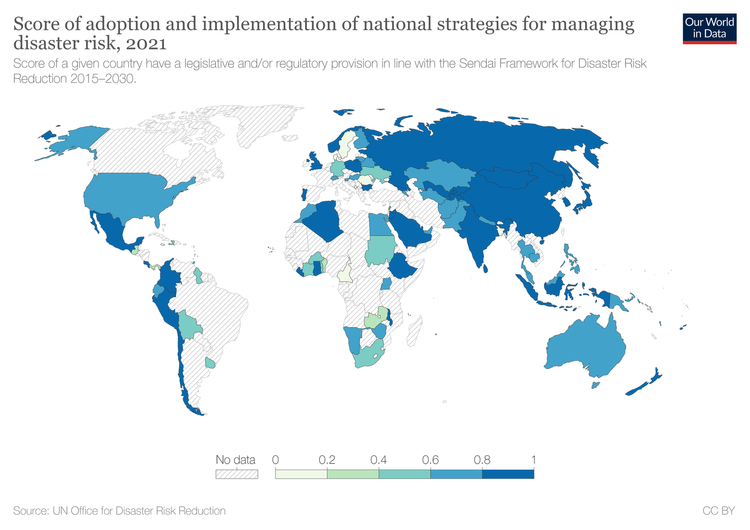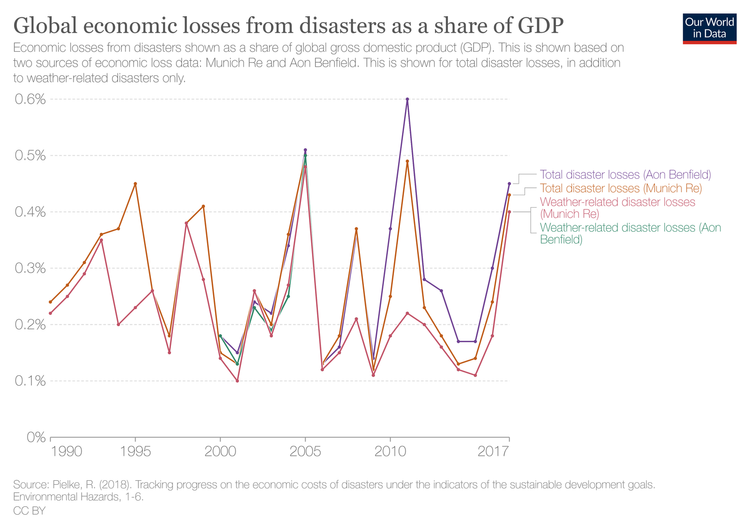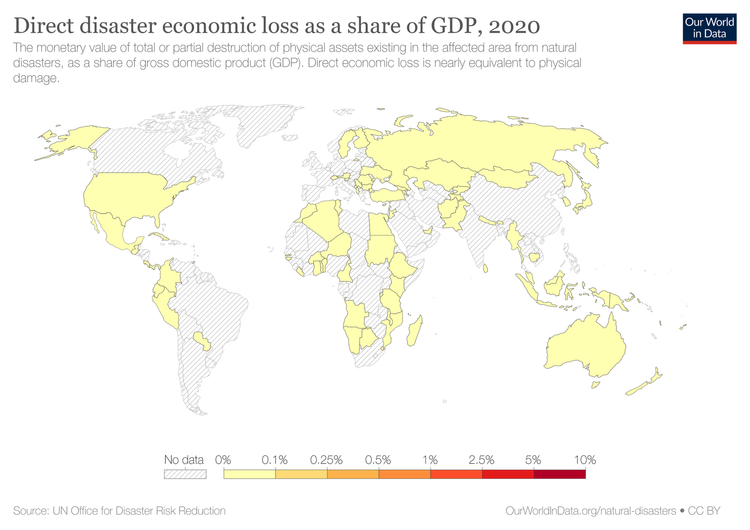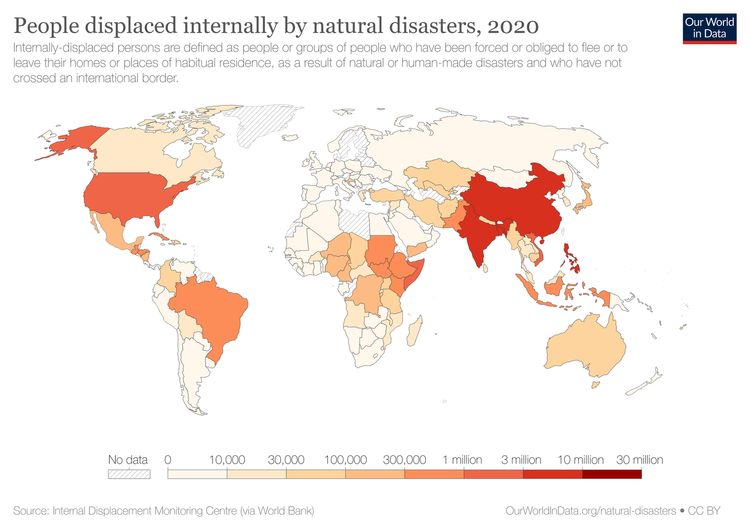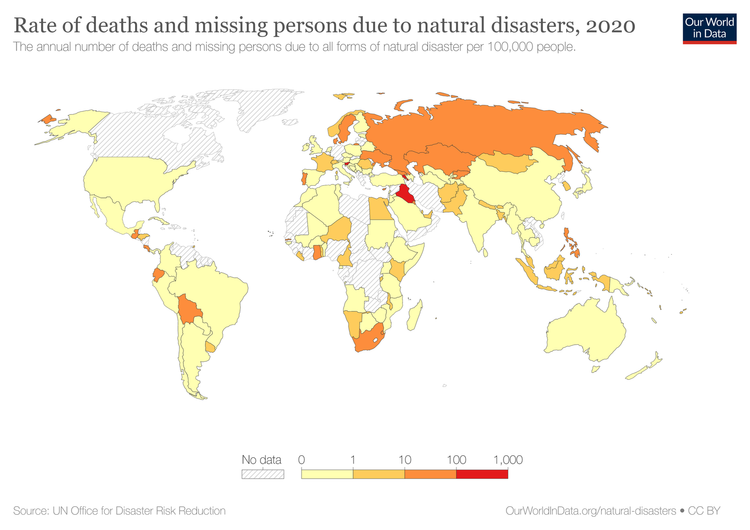Sustainable Development Goal #1 is to end poverty in all its forms everywhere.
Within SDG #1 are 7 targets, of which this episode will focus on Target 1.5:
By 2030, build the resilience of the poor and those in vulnerable situations and reduce their exposure and vulnerability to climate-related extreme events and other economic, social and environmental shocks and disasters.
The interrelation of disaster and poverty represented by target 1.5 acknowledges the reality that disasters in developing countries are responsible for 95% of the deaths resulting from global disasters, as well as visiting loss and damage 20 times greater as a percentage of GDP of developing countries in contrast to their developed counterparts.
To measure target 1.5, there’s 4 indicators:
Indicator 1.5.1: Number of deaths, missing persons and persons affected by disaster per 100,000 people.
Indicator 1.5.2 is Direct disaster economic loss in relation to global gross domestic product (GDP).
Indicator 1.5.3: Number of countries that adopt and implement national disaster risk reduction strategies in line with the Sendai Framework for Disaster Risk Reduction 2015–2030.
Indicator 1.5.4: Proportion of local governments that adopt and implement local disaster risk reduction strategies in line with national disaster risk reduction strategies.
The year 2030 has been set as the deadline for this target, to be met in alignment with the Sustainable Development Goals as a whole.
Looking first at indicator 1.5.1 measures the number of people who died during, directly afterward or as a direct result of a hazardous event.
It also measures those whose whereabouts is unknown since such an event, as well as those who’ve suffered injury, illness, or other health effects.
It additionally measures how many people were evacuated, displaced, relocated, or suffered direct damage to their livelihoods and assets of many forms.
Indicator 1.5.2 measures the relation between economic loss attributed to a disaster, whether direct or indirect. Examples of such assets physical assets are homes, hospitals, schools, and other buildings; various forms of physical infrastructure, such as transport, energy and telecommunication; industrial plants, crops and livestock.
Indicator 1.5.3 focuses on a global policy relevant to all indicators of Target 1.5. The Sendai Framework for Disaster Risk Reduction 2015-2030., adopted by all UN member states in 2015, the year of the SDG’s adoption, pertains to worldwide goals responding to disaster risk reduction. The framework was taken up within the Third World Conference on Disaster Risk Reduction, hosted in Sendai, the largest city in Japan’s north-eastern Tōhoku region, the epicentre of the catastrophic 2011 earthquake and tsunami.
Under the purview of the UN Office for Disaster Risk Reduction, the period of the Sendai Framework is parallel to the SDGs, from 2015 through to 2030, articulating four priorities for the prevention and risk reduction of new disasters, as well as 7 targets, several of which bridge with SDG target 1.5’s indicators.
The four priorities of the Sendai Framework are:
Understanding disaster risk
Strengthening disaster risk governance to manage disaster risk
Investing in disaster reduction for resilience and
Enhancing disaster preparedness for effective response, and to "Build Back Better" in recovery, rehabilitation, and reconstruction.
Lastly, indicator 1.5.4 relates to the previous indicator, but in contrast to 1.5.3 which measured the number of countries which had adopted disaster risk reduction strategies like the Sendai Framework, 1.5.4 measures the percentage of local governments within each country who’ve adopted and implemented disaster risk reduction strategies in alignment with the national strategy.
Looking at the progress of target 1.5, in 2019, 24,000 people were reported as disaster fatalities, down from 126,000 in 2018.
Though the mortality trend had been downward since 2005, the COVID-19 pandemic is expected to reverse this progress. As such, disaster risk reduction including biological risks such as pandemic’s is crucial.
Direct economic loss of $70 billion was reported in 2019, 60% in the agricultural sector.
In 2020, 120 reported they had developed and adopted either national or local disaster risk reduction strategies, an improvement from the 48 countries reporting such strategies at the adoption of the Sendai Framework in 2015.

